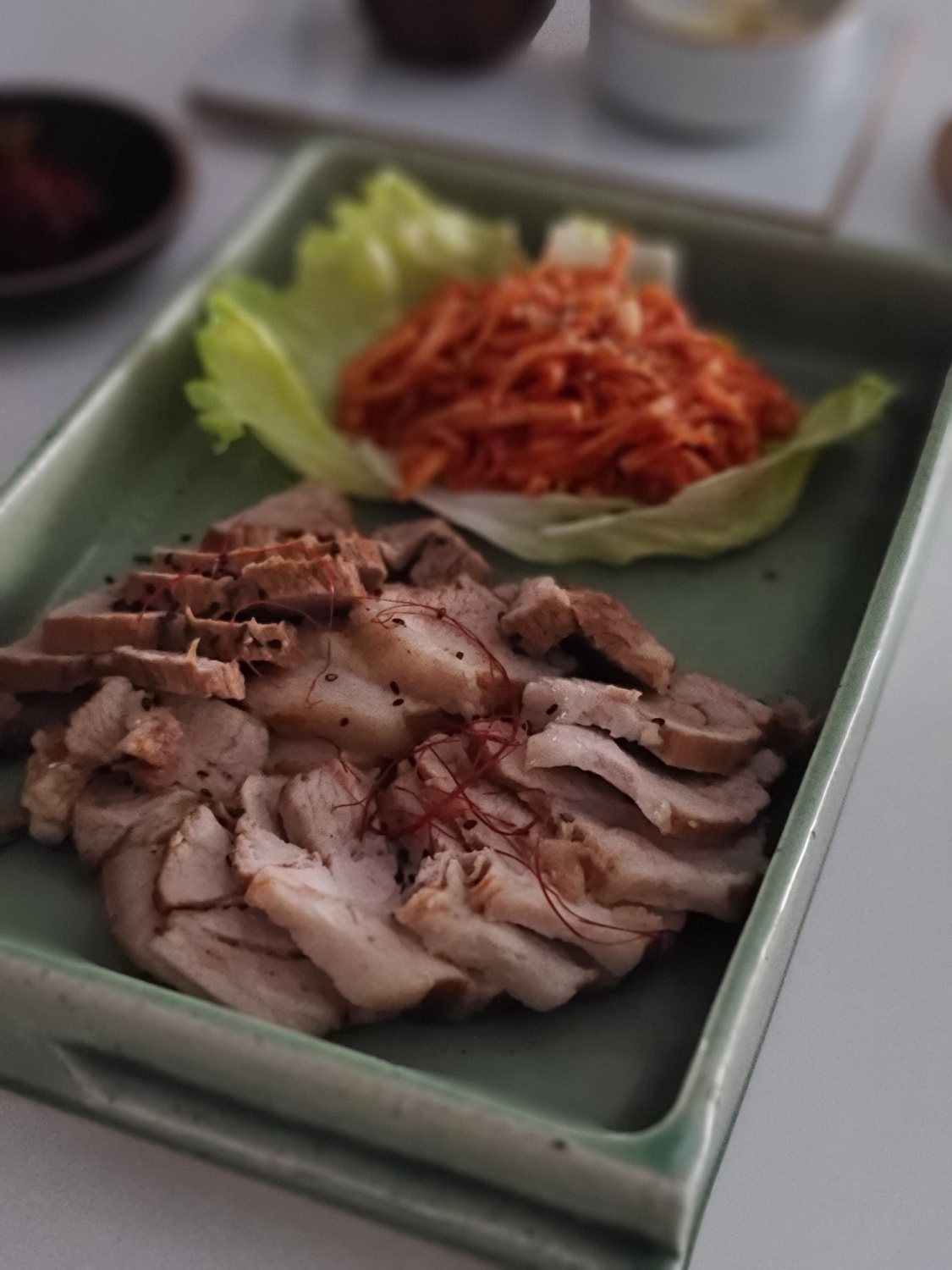Tender Pork Shoulder Boil with Soy Sauce & Sugar
Super Simple Pork Shoulder Boil Flavored with Soy Sauce and Sugar

Enjoy succulent pork shoulder, an affordable cut, made with simple broth ingredients. This recipe enhances the meat’s flavor by adding soy sauce and sugar, turning a potentially dry cut into something moist and delicious. Try this easy and satisfying pork boil!
Main Ingredients- 1kg Pork shoulder
- 1 Onion (cut into large chunks)
- 2 Green onions (cut into large chunks)
- 1/2 Tbsp Whole peppercorns
- 5 Bay leaves
- 20 Cloves garlic
Broth Seasoning & Flavor- 2 Tbsp Doenjang (Korean fermented soybean paste)
- 1 Tbsp Instant coffee (or ground coffee)
- 2 Tbsp Soy sauce
- 1/2 Tbsp Sugar
- 2 Tbsp Doenjang (Korean fermented soybean paste)
- 1 Tbsp Instant coffee (or ground coffee)
- 2 Tbsp Soy sauce
- 1/2 Tbsp Sugar
Cooking Instructions
Step 1
First, prepare all the ingredients needed for boiling the pork. Wash them thoroughly and cut them into large pieces. Lightly rinse the pork shoulder under running water to remove any blood.

Step 2
In a large, deep pot, add 1 liter of water. Add 1 tablespoon of instant coffee to help remove any gamey odor and enhance the flavor. If you’re sensitive to coffee flavor, you can use ground coffee or reduce the amount.

Step 3
Next, add 2 tablespoons of doenjang, which is excellent for adding a savory depth and removing odors. Stir well to dissolve the doenjang completely in the water. The savory notes of the doenjang will effectively neutralize any pork smell.

Step 4
Here’s a key step for odor removal! Add the 2 large chunks of green onion and 20 whole cloves of garlic. The garlic will impart a subtle aroma, making the pork even more delicious.

Step 5
Add the 1 large chunk of onion for a touch of sweetness, 5 bay leaves for aromatic fragrance, and 1/2 tablespoon of whole peppercorns for a hint of spice. These aromatics will work together to eliminate any gamey smell from the pork.

Step 6
Place the prepared pork shoulder into the pot. Ensure the meat is submerged in the water so it cooks evenly. Pork shoulder is a relatively lean cut, so overcooking can make it dry. Pay attention to the cooking time.

Step 7
Now, turn the heat to high and bring the water to a rolling boil. Once boiling, reduce the heat to medium, cover the pot, and let the pork simmer gently for about 40 minutes until it’s tender. Skim off any foam that rises to the surface during cooking for a cleaner result.

Step 8
As the pork is nearing doneness, it’s time to add the final touches for flavor. Add 2 tablespoons of soy sauce to the pot to enhance umami and give the pork a beautiful glaze. You can adjust the amount of soy sauce based on the volume of the broth and your preference.

Step 9
Also, add 1/2 tablespoon of sugar for a subtle sweetness that will deepen the flavor profile. The combination of soy sauce and sugar will make the pork’s flavor richer and incredibly tender.

Step 10
After adding the soy sauce and sugar, continue to simmer for another 10-15 minutes, allowing the sauce to slightly reduce and the flavors to infuse into the meat. Be careful not to over-reduce, as it might become too salty. Taste and adjust the cooking time accordingly. This step is crucial for transforming the potentially dry shoulder cut into a moist and flavorful dish.

Step 11
Carefully remove the well-cooked pork from the pot and let it cool slightly. Before it cools completely, trim off any excess fat from the surface for a cleaner and more tender bite. Slice the pork into your desired serving size.

Step 12
Arrange the sliced pork attractively on a serving platter. Sprinkle with black sesame seeds or toasted sesame seeds for added texture and nutty flavor. Serve alongside refreshing radish salad (musaengchae), aged kimchi (mookeunji), or fresh kimchi for a complete and delightful meal. Enjoy with a warm bowl of rice!



